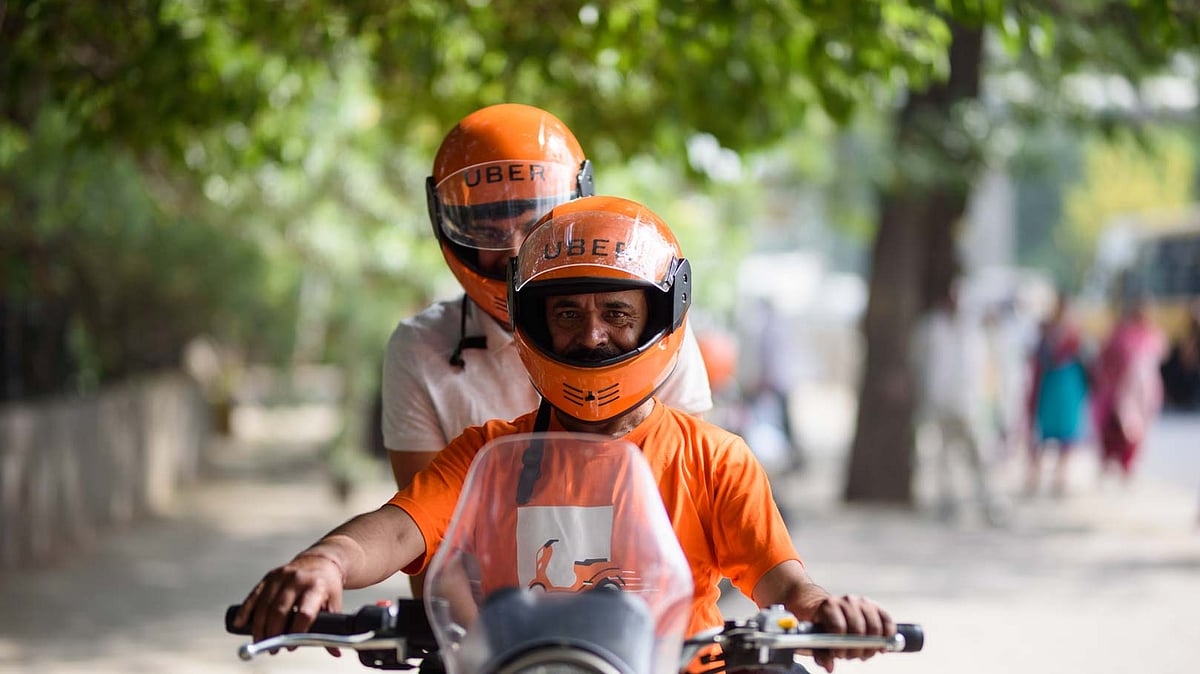
Navigating On Two Wheels: How Bike Sharing Can Ease Congestion In Cities
After the huge success of cab sharing services, bike sharing once again has the potential to become a path breaking innovation in Indian mobility.
Will the riders’ enthusiasm for the service be matched by the regulators?
Around 32 per cent of Indian roads are single lane and the difficulties faced in getting a car around these lanes are only too well known. But as it is said, where there is a problem, there is an opportunity. To help ride in India’s narrow lanes and through high traffic congestion, global cab aggregator Uber has launched a bike taxi service, UberMOTO, in a number of cities. The service is already operational in a number of nations, especially in South East Asia and proven benefits in terms of time and fuel optimisation are already being studied.
According to a study by Indonesia-based AlphaBeta Analytics, Uber users save 38 per cent time with uberMOTO and 9-18 per cent with uberX (cab sharing) compared to other modes of transportation available earlier. The report suggests that by 2020, the number of daily personal car and motorbike trips could be over 40 million for just Indonesia (Figure 1). Given the rising concerns over global greenhouse emissions and constant congestions faced by cities around the world, such a huge number of personal trips is clearly unsustainable and herein lies the potential of ride sharing services. The study also argues that public transportation takes 1.3 to 2.2 times longer than private vehicles to get from A to B (Figure 2). Bike sharing once again shows the potential to plug this gap by ensuring easy and affordable last mile connectivity for its users.
Globally, bike taxis have found significant traction in Southeast Asia. Companies such as Singapore-headquartered GrabTaxi and Indonesia’s Go-Jek are a few big companies in this segment. Uber too has been operating in South East Asia and has received an encouraging response in countries such as Indonesia and Vietnam. According to an Uber spokesperson, “Motorbikes continue to be the region's main form of transportation, especially in Jakarta as well as the Vietnamese capital of Hanoi and the southern commercial hub of Ho Chi Minh City. They can manoeuvre through crowded, narrow city streets more easily than cars. Traditionally, bikes have been a big part of the commute paradigm in these markets and bike sharing helps take this forward with the help of technology, giving a chance to people to travel comfortably, independent of whether they own bikes or not.”
Southeast Asia’s ride-sharing market is predicted to grow from $2.5 billion in 2015 to $13 billion by 2025, according to a report, co-authored by Temasek and Google. Despite the inherent biking culture in most of the South East Asian nations, the idea of pushing a button and getting a ride is new. As a new idea, people seem to be readily accepting it in a bid to make their commute easier, but once again the aggregator is facing regulatory challenges, especially in India.
It has only been a year since the service’s launch in India and UberMOTO has already completed 2 million trips. Currently, the service is available in Gurgaon, Faridabad, Hyderabad, Jaipur, Ahmedabad, Noida, Ghaziabad, Mohali and Ludhiana and the company plans to roll it out to other Indian cities soon given the mobility advantage bikes offer. The high demand and popularity of the service can be gauged from the fact that every 18 seconds an uberMOTO ride is requested in Hyderabad. Despite the popularity of the service, Bangalore had banned it within a few days of its launch stating that the service was illegal.
On the other hand, state governments like Uttar Pradesh, Punjab, Rajasthan, Gujarat, Telangana and Haryana have made necessary changes to laws to accommodate the new service. These states are already reaping the benefit as bike sharing is creating new livelihood opportunities and providing an affordable mobility option to riders. The Punjab government, for example, supported UberMoto by launching its own scheme, “Apni gaadi, Apna Rozgar” to provide two wheelers to people on a subsidised rate. The government aims to create 10,000 entrepreneurial opportunities in Punjab in the next one year and address the issue of massive youth unemployment in the state. This kind of state and regulatory support can go a long way in supporting business of the aggregators as well as addressing the public issues of unemployment and congestion.
According to Morgan Stanley Research, private car ownership is more aspirational in India - a country with growing internet access and a large population of young people who are concerned about pollution and open to ride-sharing. India has all the right ingredients to become one of the largest markets for shared mobility in the world. The Ministry of Road Transport and Highways has also recognised the value of shared mobility and innovation in its recent report titled, “Report of the Committee Constituted to Propose Taxi Policy Guideline to Promote Urban Mobility”. The report highlights the need to encourage shared transportation assets and limit private vehicle ownership to alleviate the acute congestion and pollution in cities. Bike sharing has a huge potential in providing affordable last mile connectivity in cities and two wheelers are common and widely accepted as well.
According to an Uber spokesperson,” Uber’s goal is to provide safe, affordable, reliable transportation at the push of a button, everywhere for everyone”. After the immense popularity of its cab sharing services, bike sharing once again has the potential to become a path breaking innovation in Indian mobility. The service has been welcomed with open arms by the riders, and the attitude of regulators would hopefully be the same.
This article is a part of our special series on urban mobility.